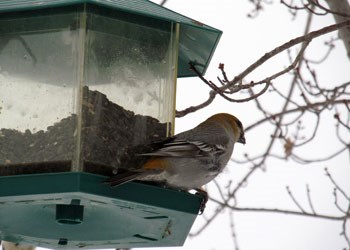Warmer temperatures and a lack of snow in parts of North America are setting the stage for what could be a most intriguing 15th annual Great Backyard Bird Count, coming up February 17-20.
Bird watchers across the U.S. and Canada are getting ready to tally millions of birds in the annual count coordinated by the Cornell Lab of Ornithology, Audubon, and Canadian partner Bird Studies Canada.
In past counts, participants were most likely to report American Robins in areas without snow. Will more robins be seen farther north this year? Will some birds, such as Eastern Phoebes, begin their migrations earlier? And where will the "Harry Potter" owl turn up next? Snowy Owls have dazzled spectators as these Arctic birds have ventured south in unusual numbers this winter - an unpredictable occurrence that experts believe is related more to the availability of food than to weather.
Participants count birds at any location they wish for at least 15 minutes on one or more days of the count, then enter their tallies at www.birdcount.ca. Anyone can participate in the free event, and no registration is required.
Last year, participants submitted more than 92,000 checklists with more than 11 million bird observations. These data capture a picture of how bird populations are changing across the continent year after year - a feat that would be impossible without the help of tens of thousands of participants.
"The Great Backyard Bird Count provides an easy way for the public to contribute to our knowledge of birds and the state of the environment as a whole," says Bird Studies Canada scientist Richard Cannings. "This huge database is an important annual snap-shot of bird populations across the continent."
To learn more about how to join the count, get bird ID tips, downloadable instructions, a how-to video, past results, and more visit: www.birdcount.ca. The count also includes a photo contest and a prize drawing for participants who enter at least one bird checklist online.




